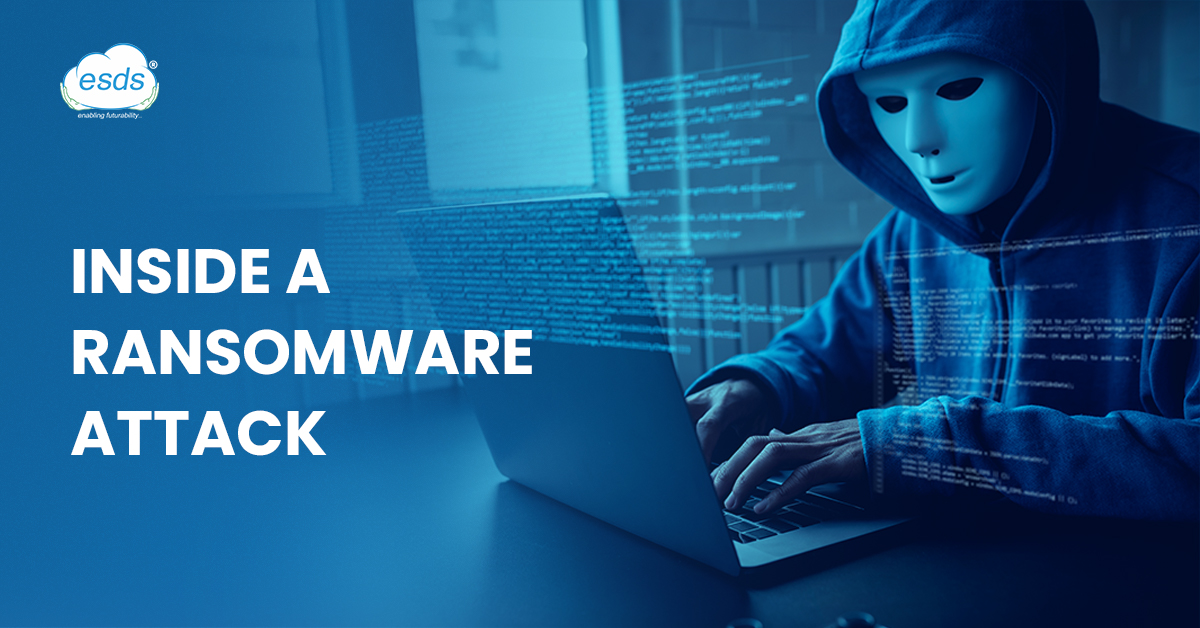Inside a Ransomware Attack: How It Works and What Happens
It’s no secret that ransomware attacks are making headlines these days. Businesses of all sizes and sectors, from enterprises to SMBs, are increasingly targeted by both commodity and human-operated ransomware. But what actually happens during an attack, and what potential repercussions, operational or legal, can it have for your business? We’ll take a deep dive into various ransomware sources, attack types, and the best approaches for minimizing the impacts.

Here’s What Your Business Needs to Know About Mitigating a Ransomware Attack
What Is Ransomware?
In a ransomware cyberattack, the victim’s data or vital infrastructure is used as leverage until a ransom demand is satisfied. Because these attacks can be lucrative, a whole black market ransomware industry with brokers, operators, and affiliates has emerged. To gain initial access, the access brokers compromise networks. They then sell that access to nefarious third parties. The ransomware tools required to carry out an attack are designed and maintained by a ransomware-as-a-service (RaaS) provider (think malware, messaging, and payment processing).
In the following step, the ransomware affiliate distributes and runs the ransomware payload. Depending on the nature of the scam, these affiliates buy services from the access broker or operator. They also cause disruption, reputational harm, financial losses, and potential regulatory penalties for their target businesses. Commodity and human-operated ransomware are the two main subcategories of ransomware that are prevalent today.
They can be very exceptional:
| Commodity | Human-Operated | |
| Actor | “Out-of-the-box” malware deployed by individuals or unsophisticated criminals | Sophisticated, hands-on keyboard attacks from highly skilled criminals |
| Strategy | Rudimentary attacks aimed at a large number of businesses | Curated attacks; typically, high-profile targets with a high potential payout |
| Target | Typically, small and mid-sized businesses | Large organizations or government agencies |
| Method | Automated malware, often readily available for purchase; designed to quickly lock endpoints/data | Targeted methods that exfiltrate sensitive data or prevent access to critical infrastructure; may take weeks or months |
- Initial Compromise:
Understanding the stages of a ransomware attack is vital so your business can develop a mitigation strategy that considers each stage’s requirements. In the initial phase of compromise, the attacker gains access to your business’s environment. They may accomplish this by phishing attacks, exploiting known software or hardware weaknesses, credential theft, illegal software, or brute force.

Your business can reduce these types of threats by following the subsequent tactics:
- Enforce user and device validation with zero trust
- Use threat intelligence to stop known actors and threats
- Regularly train employees on how to identify phishing attacks
- Maintain software updates and proactively fix vulnerabilities when found.
- Enforce multi-factor authentication requirements and strengthen password security
- Intensification of the attack
The attacker will fortify their position within your IT environment during the escalation period. They could multiply their access rights internally, allowing them to move laterally across your network and gain access to confidential information in your operational departments. Besides this, they might scrape the credentials of prominent employees of your organization during this time. Exploiting known vulnerabilities, deploying malware, and persistence are frequently used techniques for escalation.
It is crucial to track user activity and log potential security events at this point in the attack:
- Enforce the session security for administration portals
- Continually monitor resources for abnormal activity
- Isolate any compromised resources by implementing automation
- Restrict account access to sensitive data with privileged access management
It’s required to keep in mind that the pre-ransom stage can last several weeks or months. It might be challenging to find hackers hiding in your network at this time. However, the ransomware attack can happen in a matter of hours once the attacker enters the exploitation phase.
- Exfiltration
During this time, the attacker exfiltrates (surreptitiously withdraws) your company data. This is often done to restrict access to critical systems in preparation for the ransom. This may be achieved by deploying malware to local endpoints, through defense evasion, and widespread encryption of business-critical files. To prevent complications from exfiltration, your business should:
During this time, the attacker leaks the data from your business.
This is frequently done in advance of the ransom to restrict access to essential systems. Malware distribution to local endpoints, defense evasion, and widespread file encryption could all be used to accomplish this.
To avoid exfiltration-related complications, your organization should:
- Examine user permissions to sensitive data.
- Regularly and thoroughly back up your data.
- Specify controlled folder access for protected folders.
- Limit the read/write permissions for business-critical data.
- Publish data to the cloud and benefit from versioning capabilities.
- Ransom
At this point, the ransomware attack is in full force. The perpetrator has established contact, shared the details of their ransom, and either carries out their threat or retreats. They may initiate communication through messaging apps and frequently demand payments in cryptocurrencies, makings payments impossible to track. At this point, the best course of action is to use your disaster backup and recovery plans – and refrain from paying the ransom. There is no assurance that your data will be returned or decrypted, even after paying the ransom. And paying the ransom only serves to encourage more online crime. Instead, reach out to your IT team to ensure a thorough cleanup and the elimination of persistent threats. As we advance, we advise the following:
- Build a culture of security – adopt a zero-trust policy. Build resiliency by giving people regular training and reliable systems that provide them the power to make the right choices.
- Create a recovery strategy to repair the damage and eliminate persistence using all-encompassing solutions. Implement data backup tools that enable you to resume business as soon as possible.
- Stop ransomware in its tracks – invest in comprehensive solutions for prevention that collaborate with your environment to block it before it harms your business.
Recovering from a Ransomware Disaster

Ransomware was primarily viewed as a security risk for a very long time. Even though that is still very much the case, ransomware is now increasingly associated with privacy issues for businesses that have been affected. Today, a significant portion of ransomware will encrypt and exfiltrate corporate files, exposing vast amounts of confidential client and employee data. Failure to protect this private information can have serious repercussions for businesses under the increasingly stringent state and industry data breach and privacy laws.
A ransomware attack is more than solo incidents at specific organizations – it’s an entire industry. And prevention must be holistic. Automation and machine learning are some tools that examine signals mirrored across your endpoints, clouds, and resources by ransomware. To protect against threats across devices, identities, applications, email, data, and cloud workloads, organizations must become more proactive and aggressive in defending them.
ESDS is mindful that, more than ever, organizations of all sizes today stand to lose data from data loss. The holistic security solutions we provide are the answers to your data safety concerns.
- 6 Ways AI Reinvents the Security Landscape - January 9, 2024
- Top 6 Current Cybersecurity Trends For 2024 - January 9, 2024
- What Have We Learned from The Recent Cybersecurity Incidents? - January 3, 2024
